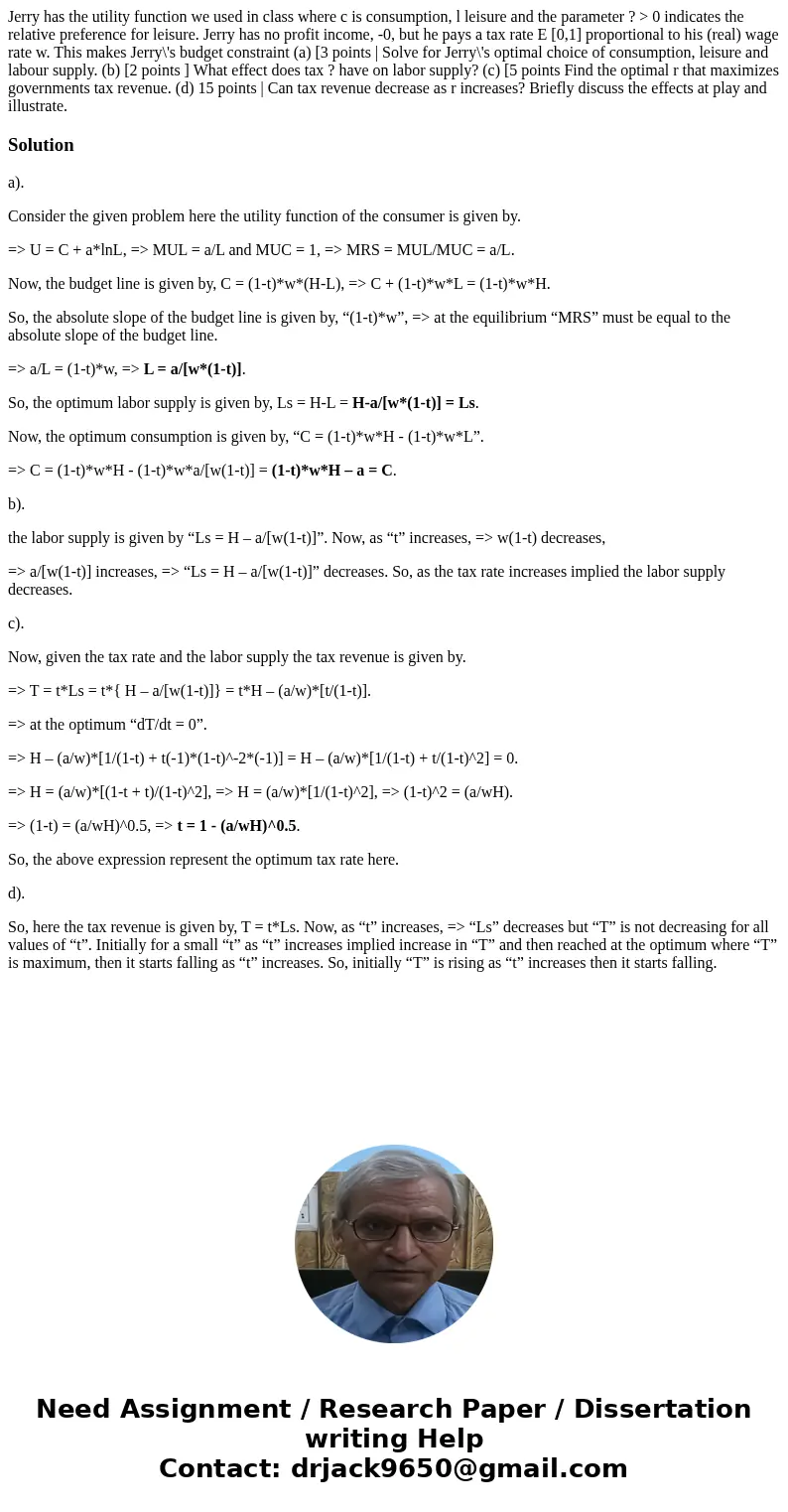Jerry has the utility function we used in class where c is c
Solution
a).
Consider the given problem here the utility function of the consumer is given by.
=> U = C + a*lnL, => MUL = a/L and MUC = 1, => MRS = MUL/MUC = a/L.
Now, the budget line is given by, C = (1-t)*w*(H-L), => C + (1-t)*w*L = (1-t)*w*H.
So, the absolute slope of the budget line is given by, “(1-t)*w”, => at the equilibrium “MRS” must be equal to the absolute slope of the budget line.
=> a/L = (1-t)*w, => L = a/[w*(1-t)].
So, the optimum labor supply is given by, Ls = H-L = H-a/[w*(1-t)] = Ls.
Now, the optimum consumption is given by, “C = (1-t)*w*H - (1-t)*w*L”.
=> C = (1-t)*w*H - (1-t)*w*a/[w(1-t)] = (1-t)*w*H – a = C.
b).
the labor supply is given by “Ls = H – a/[w(1-t)]”. Now, as “t” increases, => w(1-t) decreases,
=> a/[w(1-t)] increases, => “Ls = H – a/[w(1-t)]” decreases. So, as the tax rate increases implied the labor supply decreases.
c).
Now, given the tax rate and the labor supply the tax revenue is given by.
=> T = t*Ls = t*{ H – a/[w(1-t)]} = t*H – (a/w)*[t/(1-t)].
=> at the optimum “dT/dt = 0”.
=> H – (a/w)*[1/(1-t) + t(-1)*(1-t)^-2*(-1)] = H – (a/w)*[1/(1-t) + t/(1-t)^2] = 0.
=> H = (a/w)*[(1-t + t)/(1-t)^2], => H = (a/w)*[1/(1-t)^2], => (1-t)^2 = (a/wH).
=> (1-t) = (a/wH)^0.5, => t = 1 - (a/wH)^0.5.
So, the above expression represent the optimum tax rate here.
d).
So, here the tax revenue is given by, T = t*Ls. Now, as “t” increases, => “Ls” decreases but “T” is not decreasing for all values of “t”. Initially for a small “t” as “t” increases implied increase in “T” and then reached at the optimum where “T” is maximum, then it starts falling as “t” increases. So, initially “T” is rising as “t” increases then it starts falling.

 Homework Sourse
Homework Sourse